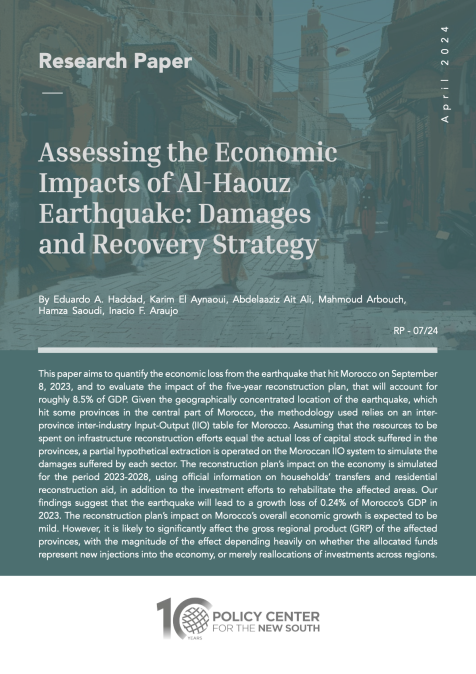Publications /
Research Paper
This paper aims to quantify the economic loss from the earthquake that hit Morocco on September 8, 2023, and to evaluate the impact of the five-year reconstruction plan, that will account for roughly 8.5% of GDP. Given the geographically concentrated location of the earthquake, which hit some provinces in the central part of Morocco, the methodology used relies on an inter- province inter-industry Input-Output (IIO) table for Morocco. Assuming that the resources to be spent on infrastructure reconstruction efforts equal the actual loss of capital stock suffered in the provinces, a partial hypothetical extraction is operated on the Moroccan IIO system to simulate the damages suffered by each sector. The reconstruction plan’s impact on the economy is simulated for the period 2023-2028, using official information on households’ transfers and residential reconstruction aid, in addition to the investment efforts to rehabilitate the affected areas. Our findings suggest that the earthquake will lead to a growth loss of 0.24% of Morocco’s GDP in 2023. The reconstruction plan’s impact on Morocco’s overall economic growth is expected to be mild. However, it is likely to significantly affect the gross regional product (GRP) of the affected provinces, with the magnitude of the effect depending heavily on whether the allocated funds represent new injections into the economy, or merely reallocations of investments across regions.







